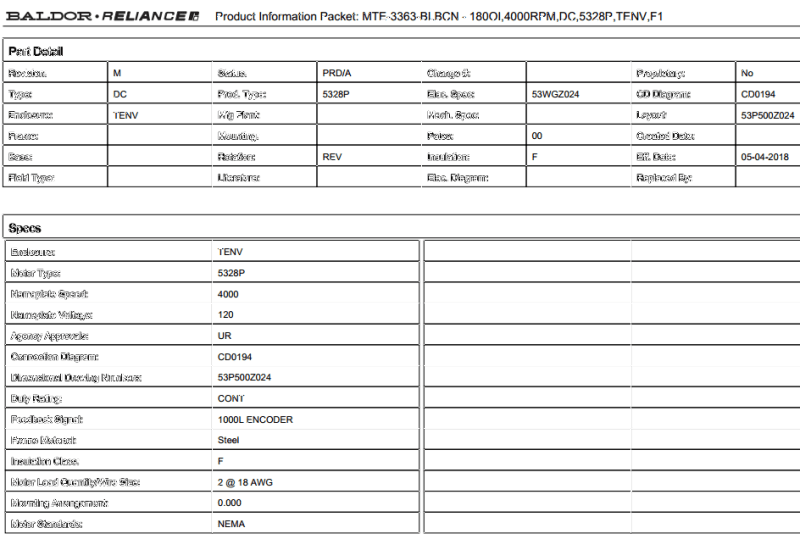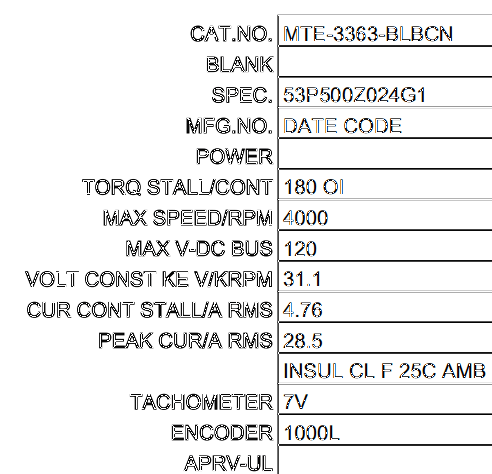Hi,
I've been struggling with making a comparison between two dissimilar servo motors. I'm working on a large CNC router X/10ft Y/5ft Z/3ft with all the axis' powered by Old Baldor MTE-3363-BLBCN brushed motors.
The Baldor is called a:
180OI,4000RPM,DC,5328P,TENV,F1
That's 180oz-in at stall (continuous).
The spec sheet gives only this info:

and

I'm trying to get into the ball-park for a modern brushless replacement.
Typical Servo-Motor selector
Most these selectors ask things like PEAK torque and continuous torque as their key point.
The Baldor spec states 180 oz-in (stall/cont). How does this get reconciled into these selector sheets as to Peak Torque and Continuos Torque two important values in the finders?
I'm having no success doing the cross.
Keith Cress
kcress -
I've been struggling with making a comparison between two dissimilar servo motors. I'm working on a large CNC router X/10ft Y/5ft Z/3ft with all the axis' powered by Old Baldor MTE-3363-BLBCN brushed motors.
The Baldor is called a:
180OI,4000RPM,DC,5328P,TENV,F1
That's 180oz-in at stall (continuous).
The spec sheet gives only this info:

and

I'm trying to get into the ball-park for a modern brushless replacement.
Typical Servo-Motor selector
Most these selectors ask things like PEAK torque and continuous torque as their key point.
The Baldor spec states 180 oz-in (stall/cont). How does this get reconciled into these selector sheets as to Peak Torque and Continuos Torque two important values in the finders?
I'm having no success doing the cross.
Keith Cress
kcress -
